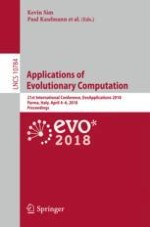2018 | OriginalPaper | Buchkapitel
Feature Selection for Detecting Gene-Gene Interactions in Genome-Wide Association Studies
verfasst von : Faramarz Dorani, Ting Hu
Erschienen in: Applications of Evolutionary Computation
Aktivieren Sie unsere intelligente Suche, um passende Fachinhalte oder Patente zu finden.
Wählen Sie Textabschnitte aus um mit Künstlicher Intelligenz passenden Patente zu finden. powered by
Markieren Sie Textabschnitte, um KI-gestützt weitere passende Inhalte zu finden. powered by
